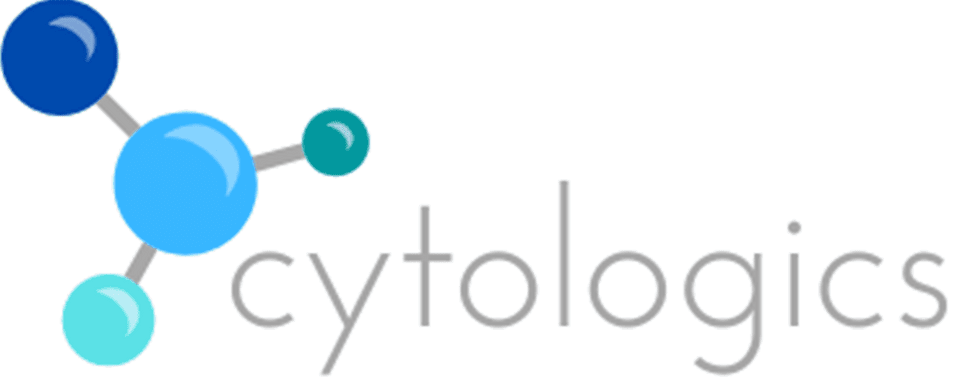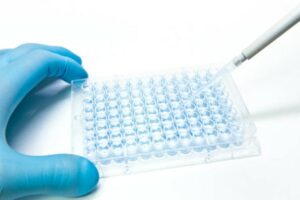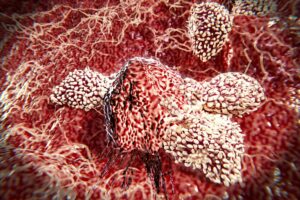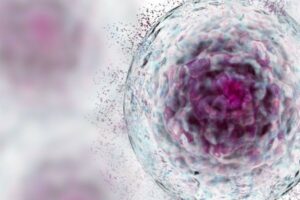Monocytes are white blood cells that originate from the bone marrow. They are a crucial element of the innate immune system. They can differentiate into monocyte-derived dendritic cells, tissue-resident macrophages, pro-inflammatory macrophages (M1), and anti-inflammatory macrophages (M2) based on cellular and cytokine signals. They regulate cell homeostasis, particularly in the setting of pathogens and inflammation.[1] In this article, we will describe the basic function and biology of monocytes, along with their applications in research and medicine.
Introduction
Human monocytes represent between 3%-10% of all the circulating nucleated cells in a healthy individual’s blood.[2] Monocytes are classified into three main subsets: CD14+ CD16- monocytes known as classical, CD14(dim) CD16+ known as non-classical, and CD14+CD16+ known as intermediate. Each subtype is distinct from the other due to specific surface markers and functions in cellular homeostasis and disease.[3]
CD14 is the primary marker of human monocytes. It is a glycoprotein and myelomonocytic differentiation antigen that acts as an auxiliary protein to toll-like receptor-4.[4] During infections, pathogens bind to CD14 and TLR-4 receptors on the monocytes and trigger cytokine production, leading to inflammation and phagocytosis activation.[5]
Figure 1. Types of Monocytes by Immunological Function.

Research and Therapeutic Applications of CD14+ Monocytes
There are multiple and diverse uses of CD14+ monocytes in research and medicine, which are discussed below:
1. Neuroprotective effects of CD14+ monocytes
CD14+ monocytes are considered a critical cell type in treating hypoxic-ischemic (HI) brain injuries using cord-blood mononuclear cells. Researchers from Duke University found that umbilical cord blood CD14+ monocytes possess several secretory proteins with solid potential to protect neurons. They efficiently prevented neuronal cell death and decreased glial activation due to oxygen and glucose deprivation.[6]
2. Tissue repairment and healing
CD14+ monocytes have been studied for their tissue healing properties. A study using freshly extracted circulating CD14+ monocytes in diabetic mice revealed that CD14+ cells alleviated the deleterious effects of diabetes and promoted muscle healing and angiogenesis (vascular growth). These implications suggest a potential therapeutic role of CD14+ monocytes for diabetics.[7]
3. Diagnosis of disease
Early diagnosis of rheumatoid arthritis. CD14+ monocytes isolated from rheumatoid arthritis patients exhibit distinct metabolic and inflammatory phenotypes featuring over-expression of chemokines/cytokines, changes in mitochondrial morphology, and enhanced production of glycolytic enzymes compared to healthy controls. This inflammatory phenotype appears before the clinical manifestations of rheumatoid arthritis. Therefore, it can help in the early diagnosis of the disease.[8]
Cancer. Cancer development leads to changes in the expression pattern of several molecular factors present in CD14+ monocytes. PDL-1 or programmed death one ligand is expressed in CD14+ monocytes of hepatocellular carcinoma patients’ blood and tends to suppress anti-tumor activities by the host immune system. A recent study indicated that the expression varies according to the stages of the tumor. Thus, this molecular marker can be evaluated in hepatocellular patients’ CD14+ monocytes to assess cancer progression.[9]
4. Toxicology
Environmental toxins such as cadmium are found to modulate the human immune system and influence the development of CD14+ monocytes. Researchers found that increased cadmium exposure decreases the number of monocytes. Therefore, CD14+ cell count can be used as an early sign of environmental exposure to cadmium.[10]
Summary
Monocytes are an important component of the innate immune system that develop from the bone marrow. They are the precursors of macrophages. Their homeostatic functions in health and disease make them a valuable research tool.
This article provided a brief explanation of their primary function and some of their research applications. New discoveries are made almost daily that are expanding our knowledge of the role monocytes play in therapeutics, diagnostics and toxicology.
If you’re interested in learning more on this topic, then check out some of our recent blog posts on research involving immune cells and the development of new immunotherapies.
References
[1] Yáñez A, Coetzee SG, Olsson A, Muench DE, Berman BP, Hazelett DJ, et al. Granulocyte-monocyte progenitors and monocyte-dendritic cell progenitors independently produce functionally distinct monocytes. Immunity. 2017;47(5):890-902.[2] Prinyakupt J, Pluempitiwiriyawej C. Segmentation of white blood cells and comparison of cell morphology by linear and naïve Bayes classifiers. Biomedical engineering online. 2015;14(1):1-19.
[3] Kapellos TS, Bonaguro L, Gemünd I, Reusch N, Saglam A, Hinkley ER, et al. Human monocyte subsets and phenotypes in major chronic inflammatory diseases. Frontiers in immunology. 2019:2035.
[4] Wacleche VS, Tremblay CL, Routy J-P, Ancuta P. The biology of monocytes and dendritic cells: contribution to HIV pathogenesis. Viruses. 2018;10(2):65.
[5] Levy E, Xanthou G, Petrakou E, Zacharioudaki V, Tsatsanis C, Fotopoulos S, et al. Distinct roles of TLR4 and CD14 in LPS-induced inflammatory responses of neonates. Pediatric research. 2009;66(2):179-84.
[6] Saha A, Patel S, Xu L, Scotland P, Schwartzman J, Filiano AJ, et al. Human umbilical cord blood monocytes, but not adult blood monocytes, rescue brain cells from hypoxic-ischemic injury: Mechanistic and therapeutic implications. PloS one. 2019;14(9):e0218906.
[7] Awad O, Dedkov EI, Jiao C, Bloomer S, Tomanek RJ, Schatteman GC. Differential healing activities of CD34+ and CD14+ endothelial cell progenitors. Arteriosclerosis, thrombosis, and vascular biology. 2006;26(4):758-64.
[8] McGarry T, Hanlon MM, Marzaioli V, Cunningham CC, Krishna V, Murray K, et al. Rheumatoid arthritis CD14+ monocytes display metabolic and inflammatory dysfunction, a phenotype that precedethe s clinical manifestation of disease. Clinical & translational immunology. 2021;10(1):e1237.
[9] Asai A, Yasuoka H, Matsui M, Tsuchimoto Y, Fukunishi S, Higuchi K. Programmed Death 1 Ligand Expression in the Monocytes of Patients with Hepatocellular Carcinoma Depends on Tumor Progression. Cancers. 2020;12(8):2286.
[10] Lu Y, Wu J, Gu W, Huang Z, Shu Z, Huang M, et al. Single-cell transcriptomics uncovers phenotypic alterations in the monocytes in a Chinese population with chronic cadmium exposure. Ecotoxicology and Environmental Safety. 2021;211:111881.






